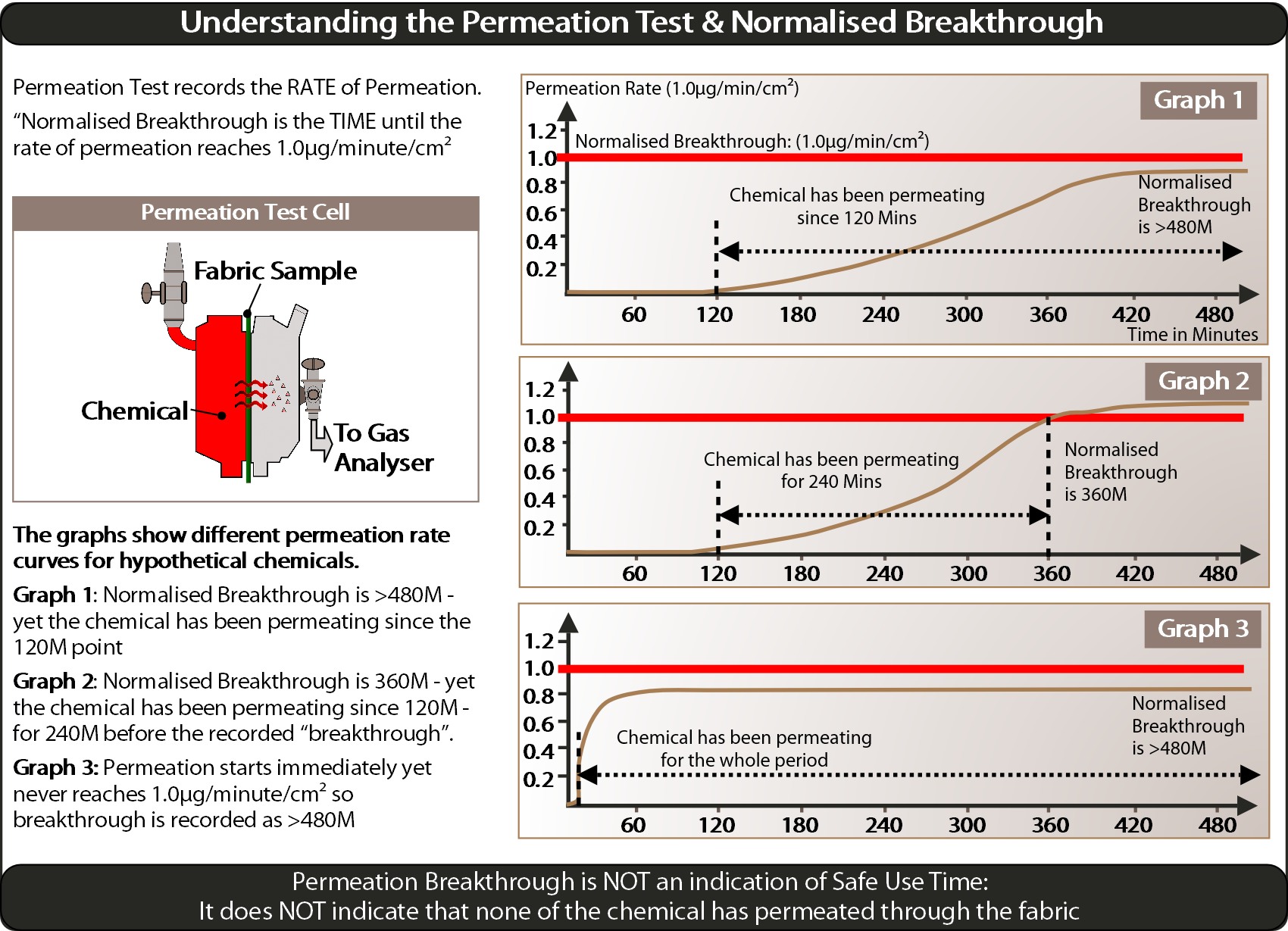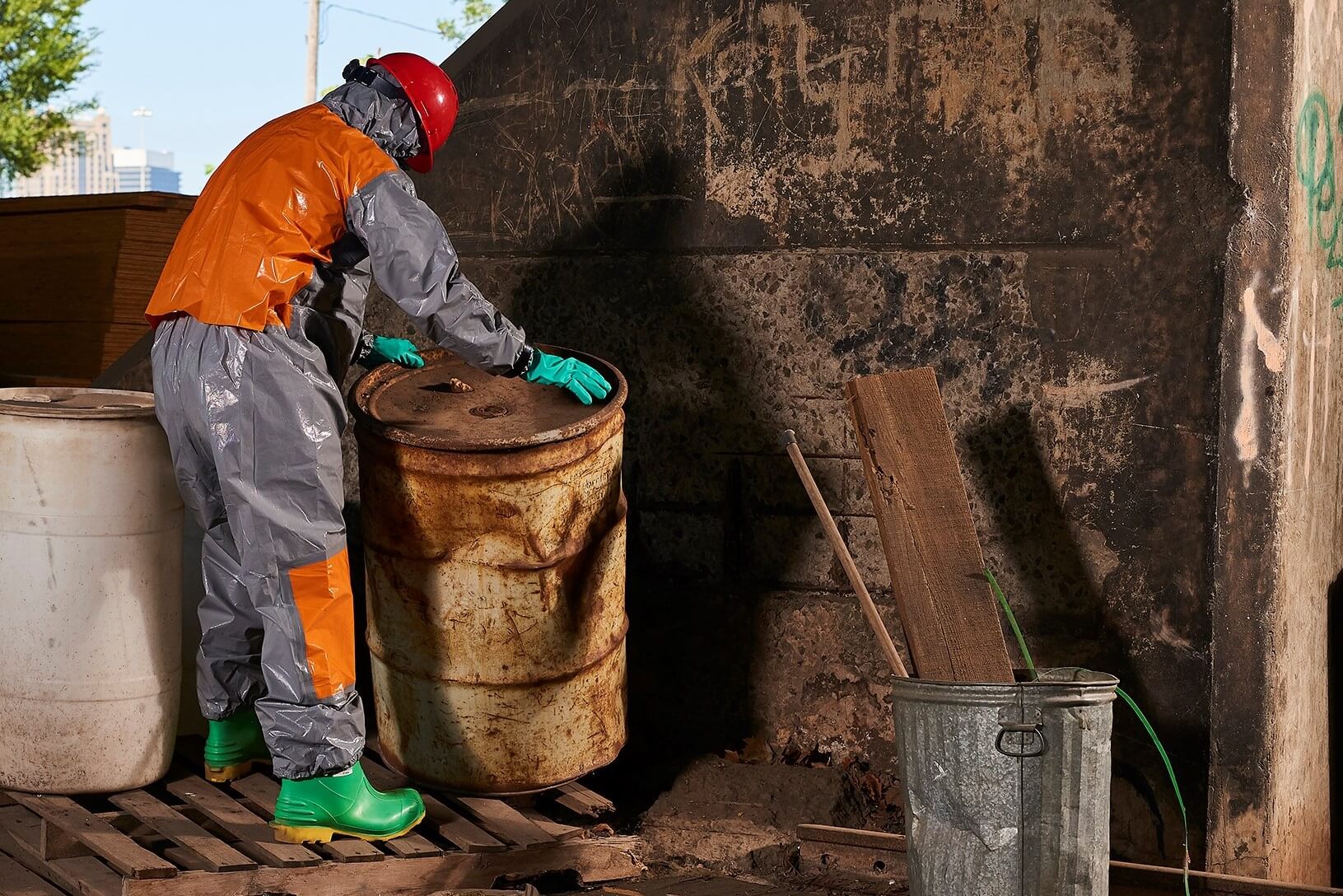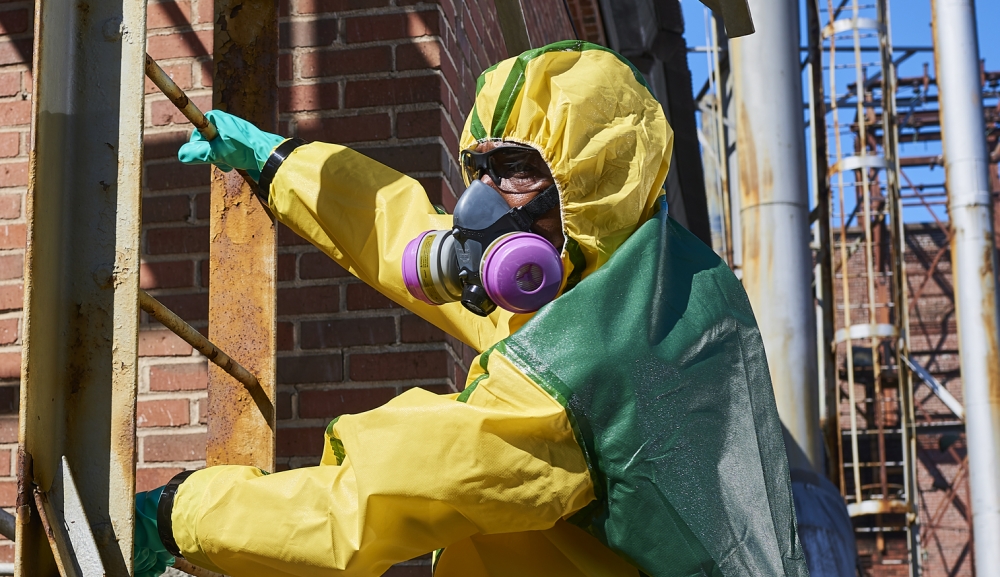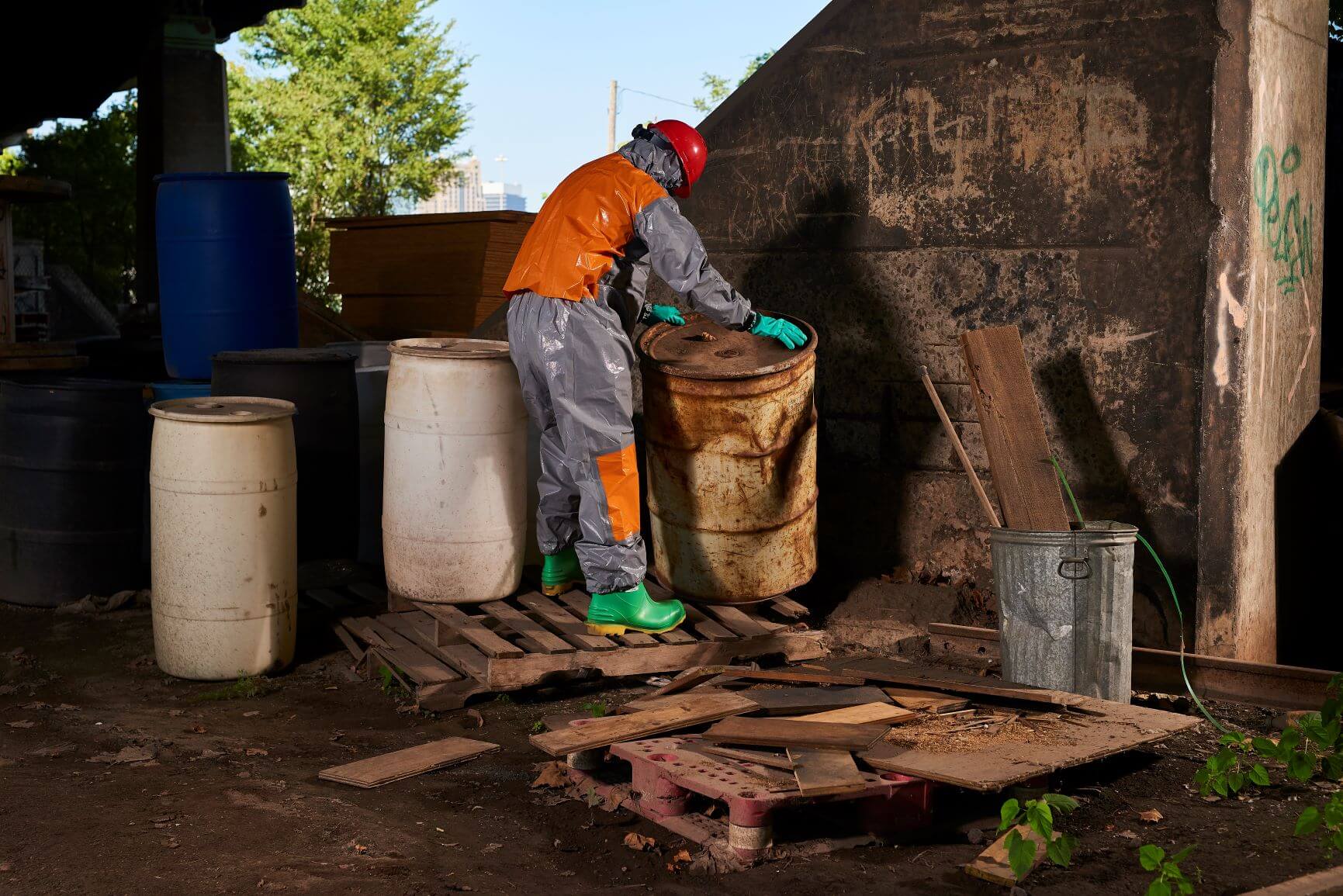Perhaps more than in any other, safety managers in the petrochemical industry play a key role in ensuring the safety of workers.
|
The Biggest Global Industry? An industry worth some $540B USD in 2019 and projected to grow to $651B USD by 2027, and estimated to employ some 4 million people in over 350,000 businesses is replete with chemical hazards. They are used as basic raw materials (feedstocks) for producing more refined chemicals; as part of the production process to bring about reactions, and as ancillary products in clean downs, which, as the industry grows and producers respond to an increasing demand for higher quality finished product, are more frequent and more extensive. |
In a chemical plant, health and safety at work is a complex beast. The number of chemicals on a single site can vary between a handful and several hundred, so the safety manager is not only battling to ensure protection across multiple chemicals and applications, but they must also ensure protection against other and often multiple hazards whilst trying to respond to often conflicting demands from different stakeholders in the business.
The fact is, the safety manager on the average petrochemical site is beset with multiple challenges on a daily basis. This blog considers some of those challenges that relate to PPE and chemical protection and how they might be addressed.

The Unique Nature of Chemical Hazards
The insidious nature of the hazards presented by many chemicals makes them more challenging because the increased danger of “risk tolerance” must be recognized and managed. Meanwhile, standards for PPE change periodically, so the diligent safety manager, as well as correctly interpreting those often complex standards, must deal with keeping up to date with the latest versions, ensuring any PPE used continues to meet the minimum performance requirements.
And failure to ensure protection for workers is not only about the health of workers. It’s also about the health of the business. Failure means people get hurt – which can translate into potentially huge future costs for the business. In the worst cases, those costs could represent an existential threat in the months or even years following an incident.
In short, managing safety on a petrochemical plant is a challenging business. So what are some of those key challenges faced by safety managers and their teams?

Challenge #1: Keeping Up to Date with Standards
Standards do not change for the sake of it. They are reviewed and revised to address anomalies or failings in previous versions, or to add new requirements with the aim of enhancing protection or addressing previously overlooked issues. Thus ensuring the products you use fully meet all the latest standards is about ensuring you are providing workers with the best protection.
| An example of a substantive change in an EN standard |
|
EN 14116 is the standard for Secondary FR Workwear – chemical resistant protective clothing to be worn OVER thermal protective garments without compromising thermal protection. The standard uses a simple flammability test (ISO 15025) to confirm fabric does not ignite, burn, or drip molten material. The original standard only required this test on garment fabric, but the 2015 version added requirements that it also be conducted on zip assembly and seams with the same pass criteria. This was an obvious and needed raising of the minimum performance requirements. Most FR SMS coveralls fail to meet these new requirements so are technically only certified to the old standard. You can watch a webinar about this issue here. |
But how do you ensure your health and safety plan keeps up with all the standards relevant to the PPE you manage? Scan through the safety press regularly? This can be useful but is a little impractical and is no guarantee of recognizing the changes you need implement.
It is useful to develop relationships with manufacturers of PPE rather than having contact exclusively with distributors. Manufacturers know their product and must keep up to date with standards, so they will be keen and able to advise on developments. You could also consider joining organizations such as the British Safety Industry Federation which provides a “stay up to date” service. Like organizations in other countries offer similar services.
The major change in EN standards for all PPE in recent years, leaving aside individual product and test standards, was the replacement of the overall PPE Directive 89/686 by EU regulation 2016/425 in 2015. This heralded greater responsibilities for distributors to ensure proper CE marking of imported product along with other developments so was a benefit for end-users as it heralded a little more certainty about PPE effectiveness. You can read about how this helped Safety managers in our blog here.
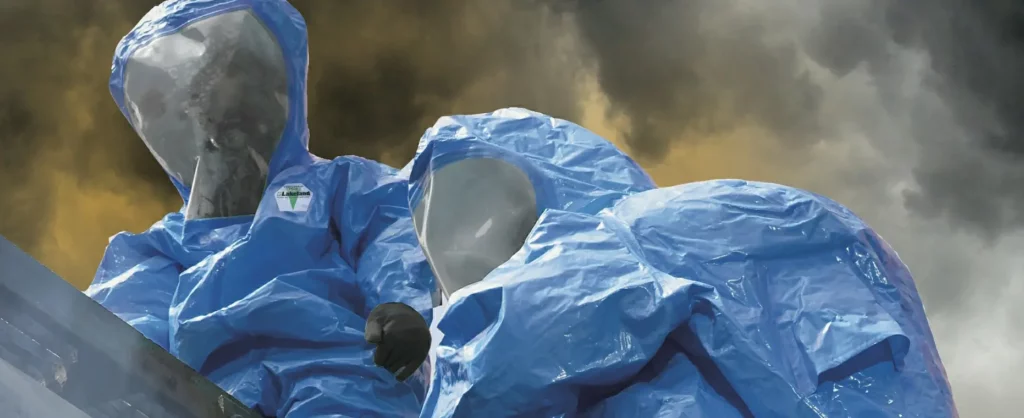
Challenge #2: Balancing Employee Safety and Comfort with Cost
When it comes to PPE selection, finding the right balance between comfort, protection, and cost is a major challenge, especially in the case of chemical safety clothing, which by its nature is not comfortable to wear, and where better designed products which offer more comfort, or specialized options specifically developed to enhance comfort, such as Cool Suits, tend to cost more.

Finding the PPE that best combines protection, comfort, and cost is challenging enough, but is made even more complex by competing demands of stakeholders in the organization.
- Senior management want workers to be protected but are also strongly motivated by cost. It is not uncommon for safety managers to be constantly directed to find savings in PPE spending.
- Workers want to be protected but are also strongly motivated by comfort. On occasion, they will simply refuse to wear PPE they view as too uncomfortable (they may not openly refuse, but they will find reasons to reject it). At the very least, they are more likely to fail to wear uncomfortable PPE properly.
- Meanwhile the safety manager and their team, whilst acknowledging the cost demands of senior management and comfort demands of their charges, must maintain protection as the first priority, with comfort and cost issues taking second place.
Balancing these competing demands means not just ensuring the PPE is providing appropriate protection, but that in terms of cost, that you are not over-protecting and spending more on PPE than you need, and in terms of comfort, that selected PPE achieves the best and most appropriate balance between comfort and protection.
- Under pressure for savings, it is worth pointing out that cheaper PPE does not necessarily save money. It is often cheap for a reason and PPE that is half the price but lasts half as long or fails to protect means likely additional costs, not savings.
- Furthermore, the cost of cheap PPE that is less effective could prove disastrous and not just for the workers that get hurt. Future legal fees, compensation payments, and opportunity cost, not to mention the negative publicity resulting from an accident can be huge and in the worst cases, existential. The movie Dark Waters (link below), based on a true story, is a good example of the possible consequences for a business that fails to protect workers properly from a chemical.
- For workers reluctant to wear PPE that is uncomfortable, or where they fail to wear it properly for the same reason, training is the key. Ensuring an understanding of the chemical hazards and its consequences will help encourage them to maintain protection in use.
- Involvement of workers in the selection process of PPE is a good way to bring them on-board. If they have been involved in the selection and related decision making, they are far more likely to have a positive attitude to the products and to wear them properly. Paying for better and more expensive PPE may not reflect well on the immediate P&L account, but it does ensure protection, it does minimize costs in the longer term (resulting in fewer health and safety incidents), and it does help to maximize productivity, as more comfortable workers will work more quickly, need fewer rest breaks, and be generally more productive.
Challenge #3: Ensuring Multiple PPE is Compatible.
It is perhaps a flaw in safety standards that PPE is generally tested and certified in isolation – unlike the real world, where in a complex environment like a petrochemical plant, the use of multiple items of PPE concurrently is the norm. Unfortunately, it is sometimes the case that not only do different items of PPE not coordinate well but even worse, in some cases, the performance of one can be adversely affected by another.
In the petrochemical environment, this issue is seen where both flame and heat and chemical protection are needed concurrently. The common and obvious solution, that of wearing a standard chemical suit over thermal protective workwear, is a potential hazard; most chemical suits are made of flammable polymer fabric, and so will ignite and undermine the thermal protection offered by the FR garment underneath it.
You can watch my webinar about this subject above. The point is, it is important to not only consider how well different items of PPE work together (such how well the hood of chemical safety clothing fits to the rim of a breathing mask), but even more importantly, whether one item of PPE may adversely affect the performance of another.
Challenge #4: Interpreting Safety Standards
European CE marking is the proof that PPE meets the requirements of standards and the Declaration of Conformity the manufacturer’s legal statement that the product is compliant with the those relevant requirements.
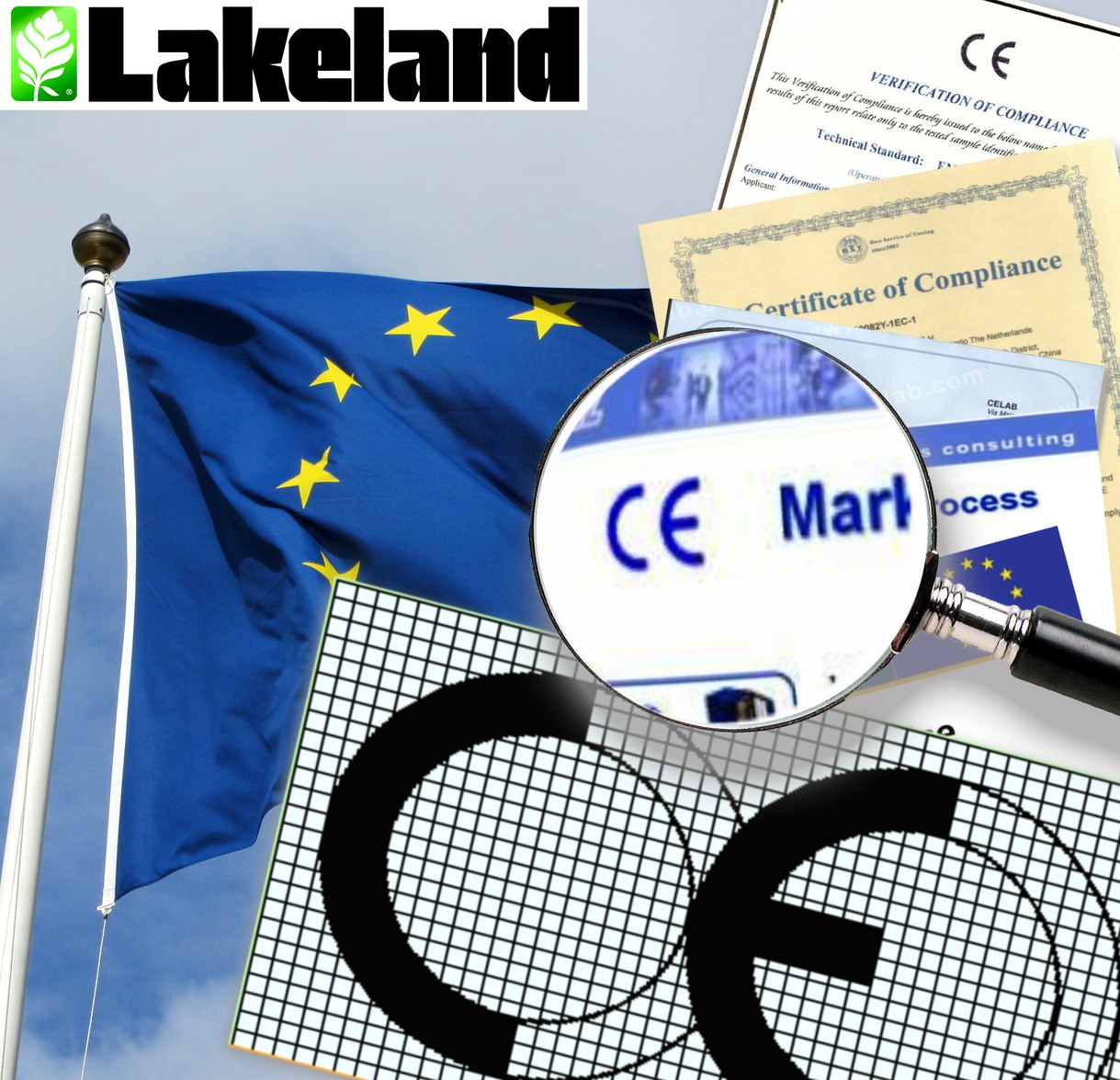
But Does Your PPE Really Comply with the Standard?
Unfortunately, CE certification is not always what it appears to be. Whilst its introduction has been a positive development it has not been wholly and exclusively positive. Especially in an environment of strong pressure to reduce costs, the temptation is to conclude that provided an item of PPE is certified, regardless of cost, it is safe. The result is that whilst in many cases it has lifted safety standards, it has also in some cases resulted in levelling standards down to the lowest common denominator. Essentially, whether the PPE is certified or not.
Thus the assumption that certification means PPE is safe to wear or use is not uncommon. There are four reasons why this is not only not the case but that it is dangerous and could result in workers not being protected as well as you think and in the worst cases, not protected at all.
- Standards provide MINIMUM Performance Requirements
Not all applications are the same and some require higher levels of protection than the minimum. Often cheap PPE only just meets the minimum requirements. Your application might need much more than the minimum.
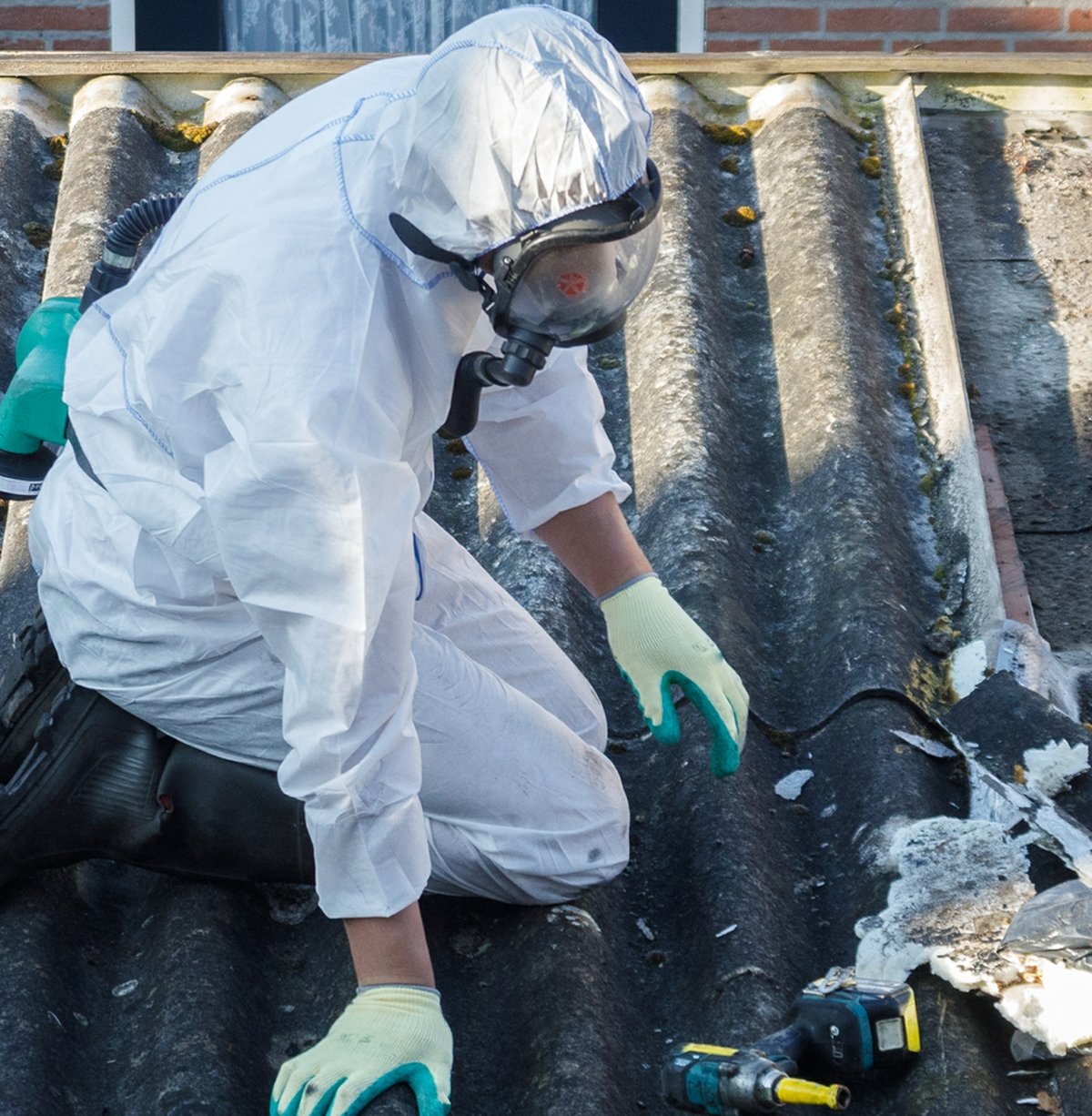 Typical disposable garments manufactured from SMS materials are commonly certified to the Type 5 standard for clothing for protection against hazardous dry particles (EN 13982). Yet the standard states that many applications (subject to the hazard level and concentration of dust) will need higher levels of protection, even up to a fully gas-tight Type 1 suit. Typical disposable garments manufactured from SMS materials are commonly certified to the Type 5 standard for clothing for protection against hazardous dry particles (EN 13982). Yet the standard states that many applications (subject to the hazard level and concentration of dust) will need higher levels of protection, even up to a fully gas-tight Type 1 suit.
A standard Type 5 breathable coverall is suitable for dust protection. But not all dust protection. |
- Not All PPE Certified to the Same Standards are the Same
The detail of standards often provides classification systems for strength, protection and other properties that will indicate where one product is better, or more appropriate for specific applications. Thus just because an item of PPE is certified to the same standard does not mean it is the same as another. One may achieve much higher classifications or classification more relevant to your application, than the other.
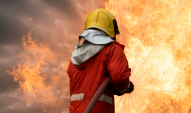 For example, many users choose the cheapest FR garments based on the fact they are certified to EN 11612. Yet how many consider the five tests within the standard assessing resistance against different types of heat energy (radiant, contact, connective etc)? It is little use purchasing an FR garment for an application involving radiant heat energy if the primary risk in your application relates to contact heat energy For example, many users choose the cheapest FR garments based on the fact they are certified to EN 11612. Yet how many consider the five tests within the standard assessing resistance against different types of heat energy (radiant, contact, connective etc)? It is little use purchasing an FR garment for an application involving radiant heat energy if the primary risk in your application relates to contact heat energy |
- Standards are Commonly Misunderstood or Misinterpreted.
Standards are complex and understanding them properly can be a challenge. The safety industry is replete with examples of basic misunderstandings of what a standard is really telling you. Unfortunately, in many cases, the result could be that workers are supplied with inappropriate PPE and are not properly protected.
| Perhaps the best example is the almost ubiquitous assumption that the “breakthrough” result in a permeation test for resistance of chemical safety clothing fabric against chemicals indicates a suit is safe to use. It doesn’t. The assumption is a complete misunderstanding. You can read more about this misunderstanding here and our free ebooks “10 PPE Myths” and “10 More PPE Myths” cover a range of very common misunderstandings and misinterpretations in the safety industry.
|
You can also watch our webinar about the perils of misunderstanding CE standards below.
- CE Certification is Not Always What it Appears to Be.
In Europe, the sale and use of certified PPE is compulsory. To sell or use non-certified product is illegal. However: –
- In other parts of the world, whilst EN standards are increasingly recognized and required, there are plenty of products that carry fake certification.
- Even within Europe, there are common cases of products that appear to be certified, yet the certification is fake, and the product has never been anywhere near the tests required to confirm it meets the requirements.
- Even products that are genuinely certified are not always what you might think. Confusingly, the system allows some PPE to be certified to a standard but to exclude particular clauses within that standard. And whilst such exclusions should be indicated on labelling and detailed in User Instructions, who reads the detail in user instructions?

Reading user instructions can uncover vital information about limitations of PPE |
This is one of the reasons why it is important to review information about PPE supplied with it. And you can download our leaflet explaining how to recognize genuinely certified PPE here.
The key to guarding against the danger associated with making assumptions about standards, is to understand and apply them properly according to a deep knowledge of your applications developed from a robust risk assessment.
You can find out more about different types of standards here.
Challenge #5: Ensuring That Not Only Is the Best PPE for the Task Selected, but That It Is Cared For and Used Properly
Selecting the best PPE for the task (i.e., finding the optimum compromise between protection, comfort and cost) is only part of the job. You might spend all your budget and more on the the best PPE in the world, but if it is not managed and used properly it can easily be a waste of time and money.
This issue has been extensively dealt with in our blogs here and here.
- Understand the issues around the care of PPE.
In the case of chemical safety clothing, single or re-usable, storage and disposal and so on. You can read more about this here. - Recognise the dangers associated with “Risk Tolerance”.
This is the tendency to grow familiar with risks and take regular shortcuts for comfort or other reasons. Take action to manage this and minimize the problem. You can read more about this and how an understanding of behavioral science can contribute here. - Establish effective training programs for all those involved in the selection and use of PPE.
This will include developing understanding of the hazards and ensuring PPE is used or worn as it should be at all times. - Ensure effective procedures are in place for donning and doffing.
These are critical part of wearing a chemical suit – arguably even more important than choosing one. Ensure systems are well understood through effective training. You can read more about Donning and doffing here.
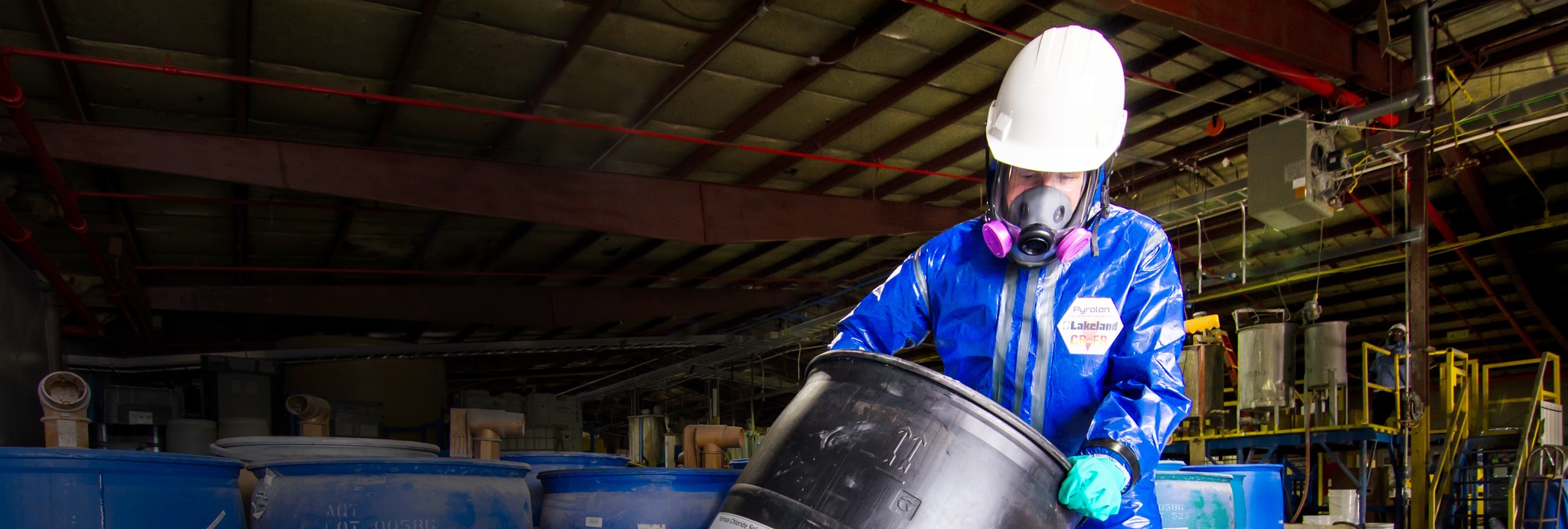
Challenge #6: Increasing and Maintaining Employee Engagement in PPE
The benefits of an engaged and pro-active workforce in decision-making about PPE and how it is managed and used are clear. The opposite even more so. I have personally seen real examples of new items of PPE being roundly rejected by a workforce, not because there was anything wrong with it, but because they had absolutely no involvement in its selection so assumed it was replacing the incumbent product for negative reasons. This can occur even if the new PPE is demonstrably better than the existing one.
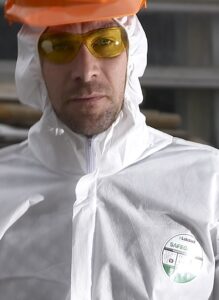 In one example, when replacing a non-breathable flashspun polyethylene garment with a breathable SMS garment, the workforce in one factory refused to accept that the new product was more air permeable, and therefor more comfortable, despite the fact that this is patently not the case and demonstrably so! In one example, when replacing a non-breathable flashspun polyethylene garment with a breathable SMS garment, the workforce in one factory refused to accept that the new product was more air permeable, and therefor more comfortable, despite the fact that this is patently not the case and demonstrably so!
This rejection was not really about which product was better or more breathable, it was about the workforce feeling disenfranchised by a selection process that they had not been asked about and had played no part in. They were determined to find some way, any way, of rejecting it. An engaged workforce can save much wasted time and make life much easier for the busy safety manager. |
- Similarly, when it comes to the care and use of PPE, involvement of the workforce in the development of procedures, rather than simply “dropping” those procedures on them as a “fait accompli,” will result in a much more positive attitude and a much greater likelihood that those procedures will be adhered to.
- To increase and maintain employee engagement in and compliance with procedures required to ensure protection is maintained, safety management teams need to directly involve workers in the processes to set them up. No-one knows the hazardous tasks in a business better than those that perform them, so involve them in regular risk assessments, and reviews of safety plans and procedures. Establish reviews of PPE, asking questions about its use and performance: –
- Are there any concerns about the protection provided by the PPE?
- Is the PPE sufficiently comfortable to wear?
- Could it be improved in any way?
- Is it always worn properly? If not, why not?
- It seems obvious, but if new PPE is to be introduced, ensure samples have been tested and tried by those who will have to use it, with an open conversation to assess it honestly. Trying to force new PPE on workers who have not accepted it is unlikely to work well.
- Once selected and procedures for use established, regular training to ensure workers understand the hazards and how to don, doff and use the PPE properly will help ensure protection is maintained
- Establishing an open “whistle-blower” policy, whereby employees are encouraged to raise an alarm if they become aware of problems with the PPE or the procedures to manage its use, or to bring to the attention of management if they spot PPE being misused or not worn properly, can be invaluable.
- PPE manufacturers can also play a useful part. The best manufacturers will have local representatives with deep knowledge of the PPE and related standards along with an understanding of the wider range of PPE available that might contribute to not only ensuring protection but in maximizing comfort. Involvement of such manufacturers’ representatives in consultations with workers can be a useful exercise.
All these ideas will contribute to an environment where the workers – the people that must actually wear and use the PPE on a daily basis – will have a high level of engagement and are much more likely to accept PPE and most importantly, use and wear it as it should be, so that protection is maximized and the potential for accidents, and all the costs that go with them, minimized.
CONCLUSION: An innovative and holistic approach to managing the safety challenges in the petrochemical industry will bring dividends.
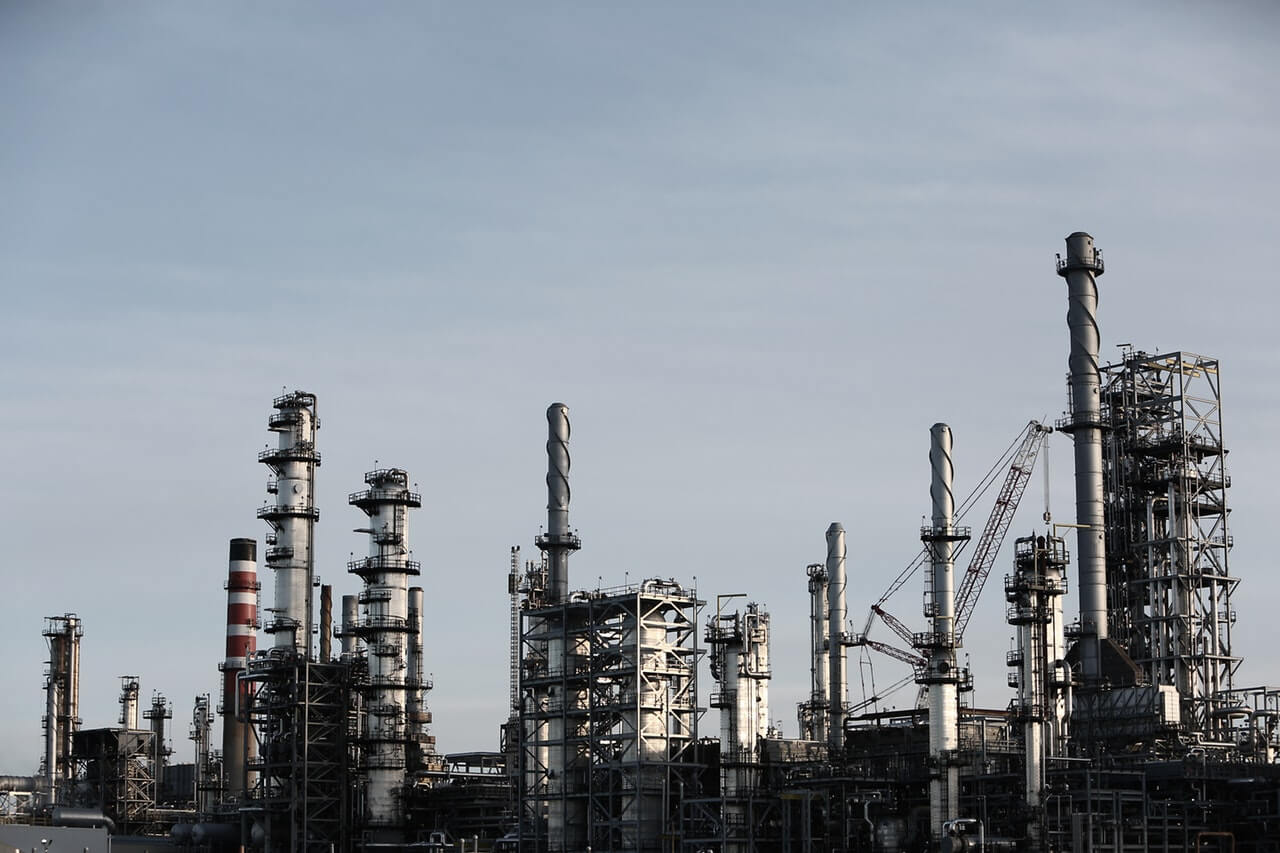
This blog has looked at some of the challenges facing safety managers in the petrochemical industry. It is a complex environment with multiple hazards including chemicals, a hazard often more challenging than most, and with multiple pressures and priorities coming from the various stakeholders in the business.
There is no easy or right answer, but to manage all these challenges, it is important to take a holistic approach and to be unafraid of using innovative methods to address them, always bearing in mind that the highest priority of all remains the protection of workers. And given the prime need of protecting workers health, the title “safety manager” is perhaps a misnomer.
In one major plant in Belgium the manager charged with handling all these issues is given the title “Head Nurse”, which would not necessarily be the first choice of many in the position, but is perhaps more reflective of all that the job entails.

